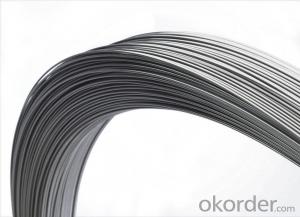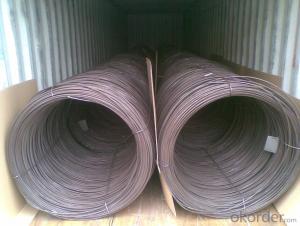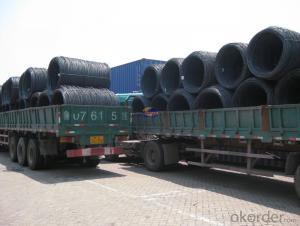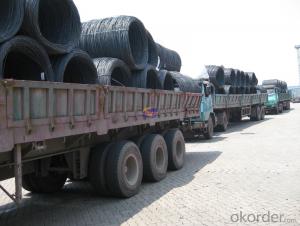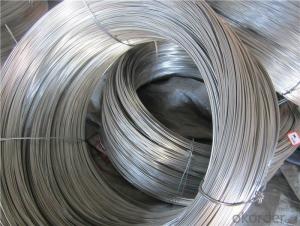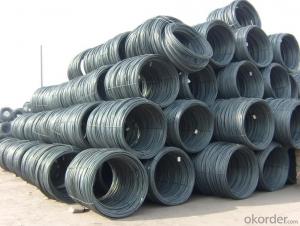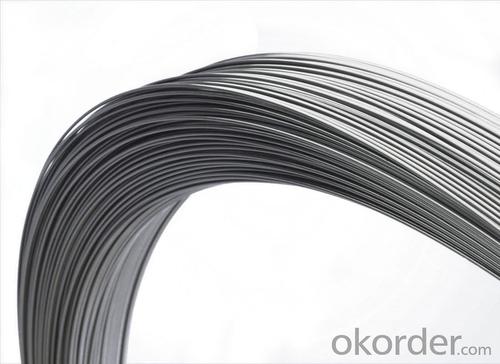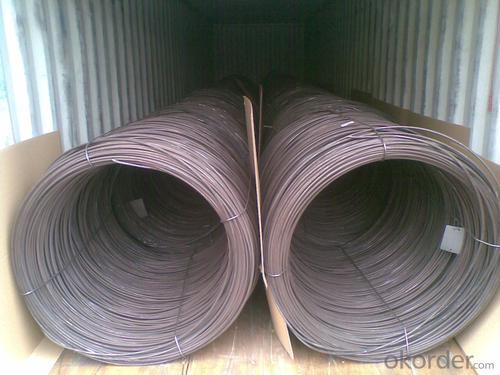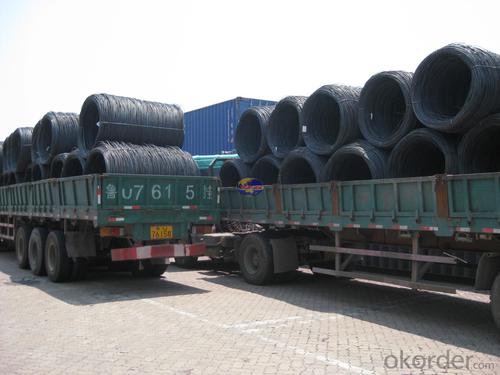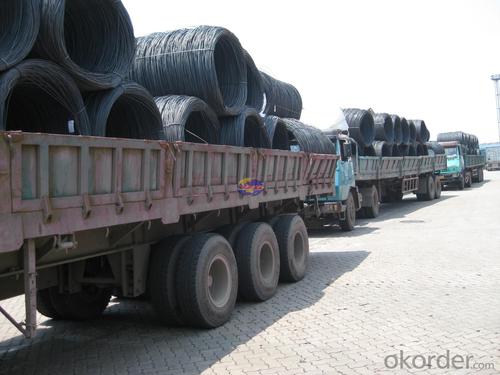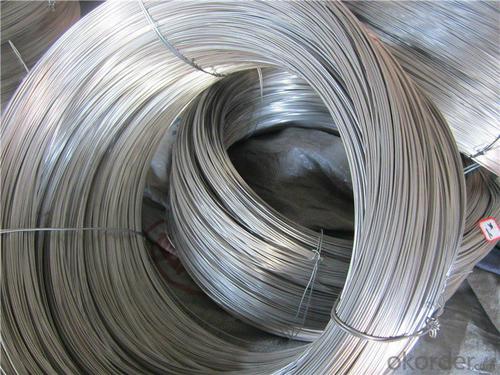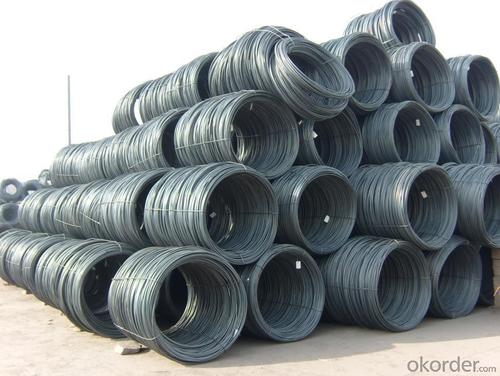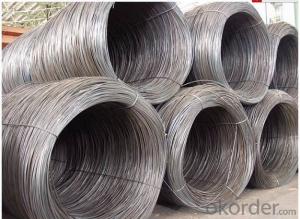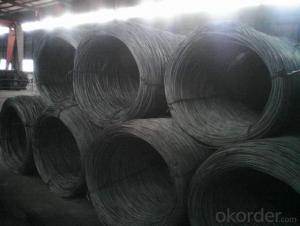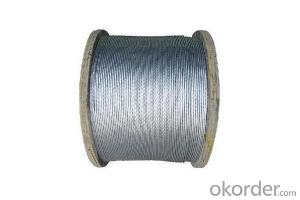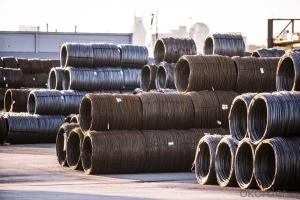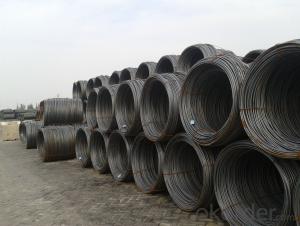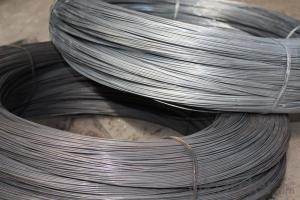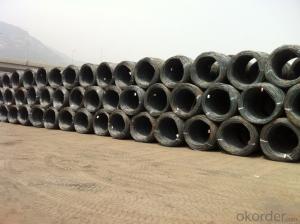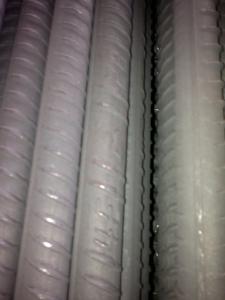SAE1006Cr Carbon Steel Wire Rod 16.5mm for Welding
- Loading Port:
- Shanghai
- Payment Terms:
- TT OR LC
- Min Order Qty:
- 100 m.t
- Supply Capability:
- 30000 m.t/month
OKorder Service Pledge
OKorder Financial Service
You Might Also Like
Specification
Description of SAE1006Cr Carbon Steel Wire Rod 16.5mm for Welding:
OKorder is offering Color Coated Steel Coil Prepainted Steel Coil at great prices with worldwide shipping. Our supplier is a world-class manufacturer of steel, with our products utilized the world over. OKorder annually supplies products to European, North American and Asian markets. We provide quotations within 24 hours of receiving an inquiry and guarantee competitive prices.
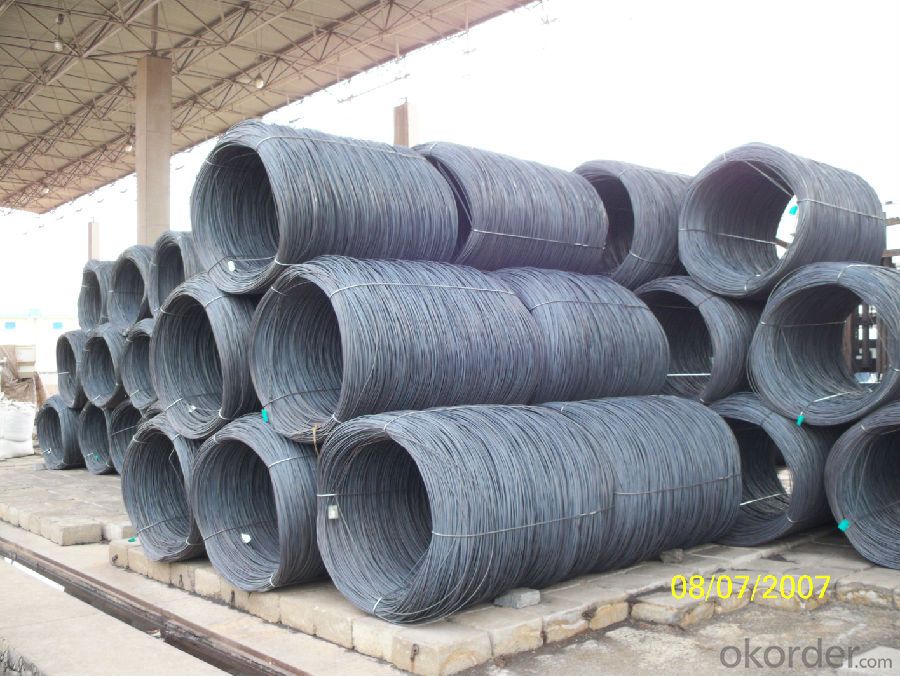
Applications of SAE1006Cr Carbon Steel Wire Rod 16.5mm for Welding:
Color Coated Steel Coil Prepainted Steel Coil are ideal for structural applications and are widely used in the construction of buildings and bridges, and the manufacturing, petrochemical, and transportation industries.
Main Product Features of SAE1006Cr Carbon Steel Wire Rod 16.5mm for Welding:
· Premium quality
· Prompt delivery & seaworthy packing (30 days after receiving deposit)
· Corrosion resistance
· Can be recycled and reused
· Mill test certification
· Professional Service
· Competitive pricing
Specifications of SAE1006Cr Carbon Steel Wire Rod 16.5mm for Welding:
1, Introduction: Color coated steel coils(sheets), i. E. PPGI, also called prepainted steel coils(sheets), are made of galvanized steel coils(sheets) with polymer coatings as surface. It's a new enclosure material and building board with characteristics of light-weighted, heat preserved&insulated, easily installed with bright colors.
2, Production Process: Pretreatment(Degreasing)_Drying_Chromating_Paint Basic Oil_Cooling_Drying_Color Coating_Cooling_Film-covering_Rolling Up
3, Characteristics:
Good at corrosion resistence. Besides zinc coating of the basic plate of galvanized steel sheet, the color coating as the surface has double lifetime to ensure better anticorrosion effect.
With excellent cold bending molded manufacturablity, PPGI products can be processed or directly used as final product. As being light-weighted and conveniently transported, they're widly used to replace wood to save energy.
4.There're thousands of colors can be chosen as per different application. Any color plays well in decoration.
No pollution with high recycling rate, PPGI coils and sheets are strongly recommended as enviroment-friendly products by the government.
5, eye bands and 4 circumferential bands in steel, galvanized metal fluted rings on inner and outer edges, galvanized.
| commodity | SAE1006Cr Carbon Steel Wire Rod 16.5mm for Welding |
| Techinical Standard: | JIS G3302-1998, EN10142/10137, ASTM A755 |
| grade | Q195,Q215,Q235,SAE1006,SAE1008 SAE1006Cr |
| Types: | Mesh welding |
| Base metal | galvanized, galvalume, cold rolled steel |
| Thickness | 0.14-1.0mm(0.16-0.8mm is the most advantage thickness) |
| Width | 610/724/820/914/1000/1200/1219/1220/1250mm |
| Type of coating: | PE, SMP, PVDF |
| Zinc coating | Z60-150g/m2 or AZ40-100g/m2 |
| Top painting: | 5 mic. Primer + 15 mc. R. M. P. |
| Back painting: | 5-7 mic. EP |
| Color: | According to RAL standard |
| ID coil | 508mm610mm |
| Coil weight: | 2--3MT |
| Package: | Properly packed for ocean freight exportation in 20'containers |
| Application: | Industrial panels, roofing and siding for painting/automobile |
| Price terms | FOB, CFR, CIF |
| Payment terms | 20%TT in advance+80% TT or irrevocable 80%L/C at sight |
| delivery time | 25 days after recepit of 20% TT |
| Remarks | Insurance is all risks |
| MTC 3.1 will be handed on with shipping documents | |
| We accept SGS certificatation test |
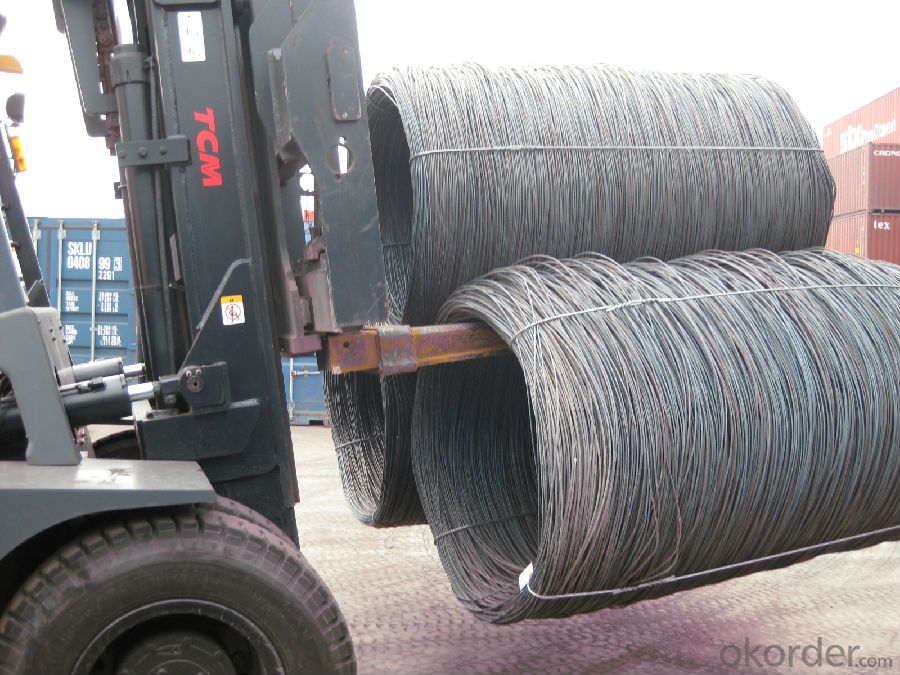
FAQ of SAE1006Cr Carbon Steel Wire Rod 16.5mm for Welding:
Q1: Why buy Materials & Equipment from OKorder.com?
A1: All products offered byOKorder.com are carefully selected from China's most reliable manufacturing enterprises. Through its ISO certifications, OKorder.com adheres to the highest standards and a commitment to supply chain safety and customer satisfaction.
Q2: How do we guarantee the quality of our products?
A2: We have established an advanced quality management system which conducts strict quality tests at every step, from raw materials to the final product. At the same time, we provide extensive follow-up service assurances as required.
Q3: How soon can we receive the product after purchase?
A3: Within three days of placing an order, we will begin production. The specific shipping date is dependent upon international and government factors, but is typically 7 to 10 workdays.
Q4: What makes stainless steel stainless?
A4: Stainless steel must contain at least 10.5 % chromium. It is this element that reacts with the oxygen in the air to form a complex chrome-oxide surface layer that is invisible but strong enough to prevent further oxygen from "staining" (rusting) the surface. Higher levels of chromium and the addition of other alloying elements such as nickel and molybdenum enhance this surface layer and improve the corrosion resistance of the stainless material.
Q5: Can stainless steel rust?
A5: Stainless does not "rust" as you think of regular steel rusting with a red oxide on the surface that flakes off. If you see red rust it is probably due to some iron particles that have contaminated the surface of the stainless steel and it is these iron particles that are rusting. Look at the source of the rusting and see if you can remove it from the surface.
- Q: How is steel wire rod used in the production of wire mesh for automotive filters?
- Steel wire rod is an essential component in the production of wire mesh for automotive filters. The wire rod serves as the raw material from which the wire mesh is created. To begin with, the steel wire rod is first processed in a steel mill, where it is heated and rolled into thin, long wires of uniform diameter. This process ensures that the wire is both strong and flexible, making it suitable for use in various automotive applications. Once the wire rod is transformed into wires, it undergoes further processing to form the wire mesh. This involves weaving the wires together in a specific pattern, typically using a specialized machine. The weaving process creates a mesh structure that allows for the passage of air or fluids while still filtering out impurities. The wire mesh produced from steel wire rod is then cut and shaped to fit the specific requirements of automotive filters. It is commonly used in air filters, oil filters, and fuel filters, among others. The wire mesh provides a sturdy and durable framework that efficiently captures and retains contaminants, preventing them from entering the engine or other crucial systems. Moreover, the use of steel wire rod ensures the wire mesh's resistance to corrosion, high temperatures, and mechanical stress, which are common challenges faced in automotive applications. This makes it an ideal choice for automotive filters, as they are exposed to harsh and demanding conditions. In summary, steel wire rod plays a vital role in the production of wire mesh for automotive filters. It serves as the raw material from which the wire mesh is created, providing strength, flexibility, and durability. The wire mesh, in turn, effectively filters out impurities and safeguards the integrity of the automotive systems it is employed in.
- Q: What are the different types of steel wire rod surface cleaning techniques?
- Various industries employ several different techniques to clean the surface of steel wire rods, removing impurities, rust, scale, or other contaminants. Some commonly used techniques include: 1. Mechanical Cleaning: The surface of steel wire rods is cleaned through mechanical abrasion using wire brushes, steel wool, or abrasive pads. This method effectively removes loose rust, scale, or paint. 2. Chemical Cleaning: Chemicals or solvents are used to dissolve or loosen contaminants on the surface. Acidic or alkaline solutions are typically employed for this purpose. The cleaning solution is applied to the steel wire rods, breaking down impurities, and rinsed off with water to remove residue. 3. Shot Blasting: High-speed steel shots or grits are propelled against the surface of steel wire rods using compressed air or centrifugal force. This technique efficiently removes rust, scale, or contaminants. 4. Pickling: Specifically designed for removing oxide layers, pickling involves immersing the steel wire rods in an acidic solution, usually hydrochloric acid. This dissolves the oxide layers, resulting in a clean and smooth surface. 5. Ultrasonic Cleaning: High-frequency sound waves create tiny bubbles in a cleaning solution, which effectively remove contaminants from the surface of steel wire rods. This technique is commonly used for delicate or intricate parts, with the rods submerged in a tank filled with the cleaning solution and subjected to ultrasonic waves to dislodge impurities. These techniques are commonly employed to clean the surface of steel wire rods, with the choice depending on the specific requirements of the industry and desired level of cleanliness.
- Q: What are the main factors influencing the choice of steel wire rod payment terms?
- There are several main factors that can influence the choice of payment terms for steel wire rod. One of the primary factors is the financial stability and creditworthiness of the buyer. If the buyer has a strong financial position, the seller may be more willing to offer favorable payment terms, such as longer payment periods or installment payments. On the other hand, if the buyer has a poor credit history or financial instability, the seller may require stricter payment terms, such as upfront payment or shorter payment periods. The market conditions and competition can also impact the choice of payment terms. In a highly competitive market with multiple suppliers, the seller may need to offer more flexible payment terms to attract buyers. This could include options like deferred payment or payment upon delivery. Conversely, in a market with limited suppliers or high demand, the seller may have more leverage and can dictate stricter payment terms. The nature of the business relationship between the buyer and seller is another crucial factor. If the buyer and seller have a long-standing relationship with a history of successful transactions, the seller may be more willing to offer favorable payment terms as a gesture of trust and loyalty. Additionally, the volume and frequency of purchases can also influence the payment terms. Buyers who consistently purchase large quantities of steel wire rod may have more negotiating power and be able to secure more favorable payment terms. Lastly, external factors such as economic conditions, currency fluctuations, and government regulations can also impact the choice of payment terms. In times of economic uncertainty or currency volatility, sellers may be more cautious and require stricter payment terms to mitigate their risk. Similarly, government regulations related to international trade or finance can also affect the choice of payment terms. Overall, the main factors influencing the choice of payment terms for steel wire rod include the financial stability of the buyer, market conditions, the nature of the business relationship, and external factors such as economic conditions and government regulations.
- Q: How is steel wire rod used in the manufacturing of wire forms for agricultural fencing?
- Steel wire rod is used in the manufacturing of wire forms for agricultural fencing by being transformed into various wire shapes and gauges. It can be straightened, cut, and then either woven or welded into the desired fence forms. The high tensile strength of steel wire rod provides durability and resistance, making it suitable for withstanding the pressure and impact that agricultural fencing may encounter.
- Q: What are the different types of surface finishes available for steel wire rod?
- Steel wire rod has several options for surface finishes, each with its own purpose and characteristics. These finishes are applied during manufacturing to enhance properties and performance. The most common surface finish for steel wire rod is the bright finish. This involves a mechanical process that removes scale and oxide layers, resulting in a smooth and shiny appearance. Bright finish is used when high corrosion resistance is needed. Another option is the black finish, also known as hot-rolled or pickled finish. This is achieved by allowing the wire rod to cool naturally after rolling, resulting in a dark, rough, and scaly appearance due to oxide layers. Black finish is commonly used for low-cost applications where corrosion resistance is not a major concern. For excellent corrosion resistance, the galvanized finish is applied. This involves coating the wire rod with a layer of zinc through hot-dip galvanizing or electroplating. It creates a shiny and protective layer on the surface, making it suitable for outdoor applications or environments with high humidity or exposure to chemicals. Phosphate finish is achieved through a chemical process called phosphating. This creates a thin phosphate coating on the surface, improving lubricant or paint adhesion and enhancing corrosion resistance. Phosphate finish is commonly used in applications requiring lubrication, such as automotive or industrial machinery. Alternatively, steel wire rod can be coated with materials like polymer or enamel to provide additional protection and improve specific properties. Coated finishes offer benefits such as increased corrosion resistance, improved electrical conductivity, or enhanced aesthetics. They are commonly used in fencing, electrical wiring, or decorative applications. In conclusion, steel wire rod can have bright, black, galvanized, phosphate, or coated finishes. Each finish serves a specific purpose and provides unique characteristics, allowing the wire rod to meet various performance requirements in different applications.
- Q: What are the factors that affect the cost of steel wire rod?
- The cost of steel wire rod can be affected by several factors. Firstly, the price of the raw materials used to produce steel wire rod, such as iron ore and scrap metal, heavily influences its cost. Any fluctuations in these raw material prices can directly impact the cost of steel wire rod. Secondly, the cost of producing steel wire rod includes various expenses like labor, energy, and equipment maintenance. Changes in these production and manufacturing costs can affect the overall cost of the product. Thirdly, the demand for steel wire rod plays a significant role in its cost. If there is high demand and limited supply, the price of steel wire rod may increase. Conversely, if there is low demand and excess supply, the price may decrease. Furthermore, market competition among steel wire rod manufacturers can also impact its cost. Intense competition can lead to lower prices as companies strive to attract customers. Conversely, a lack of competition may result in higher prices. Additionally, the cost of transporting steel wire rod from manufacturers to end-users contributes to its overall cost. Factors such as fuel prices, distance, and transportation infrastructure can affect these costs. Moreover, government regulations and policies, like import duties, export restrictions, or environmental regulations, can impact the cost of steel wire rod. Compliance with these regulations may require additional investments, influencing the product's price. Lastly, exchange rate fluctuations can impact the cost of steel wire rod in different countries. Changes in currency values can affect the import and export prices of steel wire rod, influencing its overall cost. To make informed decisions and strategies regarding the cost of steel wire rod, businesses should monitor and understand these factors.
- Q: How does the price of steel wire rod fluctuate?
- The price of steel wire rod fluctuates due to various factors such as supply and demand dynamics, global economic conditions, changes in raw material costs, and market competition. Additionally, geopolitical factors and trade policies can also influence the price fluctuations of steel wire rod. Overall, the price of steel wire rod is subject to constant changes and can be affected by numerous external factors.
- Q: What are the main factors influencing the choice of steel wire rod order payment terms options?
- The main factors influencing the choice of steel wire rod order payment terms options include the financial stability and creditworthiness of the buyer, the volume and frequency of the orders, the competitive landscape within the industry, the level of trust between the buyer and the seller, and the prevailing market conditions.
- Q: What are the advantages of using steel wire rod in manufacturing?
- The advantages of using steel wire rod in manufacturing are its high strength, durability, and versatility. Steel wire rod offers excellent tensile strength, making it suitable for a wide range of applications such as construction, automotive, and machinery. It can withstand heavy loads and provides stability, ensuring the longevity of the finished products. Additionally, steel wire rod is flexible and malleable, allowing for various shaping and forming processes during manufacturing. Its corrosion resistance properties also make it ideal for outdoor or harsh environments.
- Q: What are the different decarburization testing methods for steel wire rod?
- There are several different decarburization testing methods for steel wire rod, including the microscopic examination method, the macroscopic examination method, and the microhardness method.
Send your message to us
SAE1006Cr Carbon Steel Wire Rod 16.5mm for Welding
- Loading Port:
- Shanghai
- Payment Terms:
- TT OR LC
- Min Order Qty:
- 100 m.t
- Supply Capability:
- 30000 m.t/month
OKorder Service Pledge
OKorder Financial Service
Similar products
Hot products
Hot Searches
Related keywords
